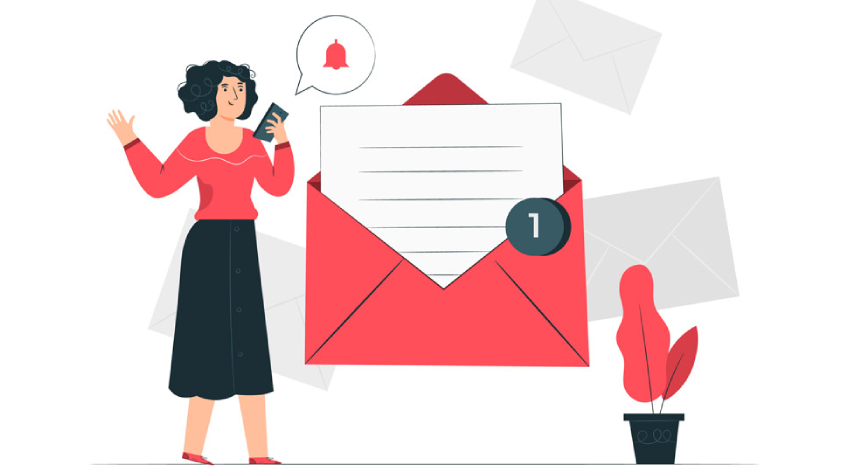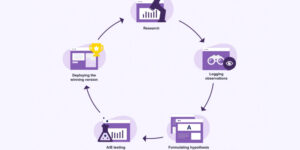
Have you ever wondered why some emails get your recipient’s attention and generate a response, and others don’t? If you are like many business owners and digital marketers, you probably have sent a few ineffective emails in your day.
But if you want to ensure that your email marketing efforts pay off and that they keep paying off, it is important to compose precise messages that make recipients take action.
The following suggestions can help you in this regard:
Create a captivating subject line
To write a captivating subject line, you must first understand what makes a headline or subject line irresistible.
There are two main types of headlines: questions and statements. For example, suppose the content of your email is an “exclusive” offer to an interested audience.
In that case, it might be appropriate to use a question such as “Do You Want This Exclusive Offer?” or “Are You Ready for This Exclusive Offer?”
The other type is using a statement such as “This New Product Is Bound to Change Your Life!” or “You Won’t Believe What We Have coming out next!”
The goal is to make your reader curious, at the very least, so they will open up the email message itself and find out more information about what you have to offer them.
It’s also important not only to include keywords that are relevant but also those which would entice readers into clicking on through because they were interesting enough from just reading those few words displayed before even opening up the full message body itself.
Use an online word counter to track the number of words and characters
As you write, it’s also important to use a word counter online, this will allow you to track the number of words and characters in your email. It’ll help ensure that your emails don’t exceed the maximum character limit and that they remove any unnecessary words or phrases.
You can make your subject lines error-free by using additional features of a word counter tool. For instance, you can turn on the grammar checker to make sure that your subject line doesn’t contain any grammatical error.
Other features that you can benefit from while using a word counter include AutoSave, Font selector, text size, Clear Text, and word density checker.
Keep your marketing emails clean
Keeping your marketing emails clean and free from irrelevant stuff is indispensable. The below points can help achieve this goal:
- Use short, simple sentences.
- Avoid unnecessary words and fluff.
- Write in active voice (“I did” instead of “it was done”).
- Be direct and clear in your writing style (no jargon).
- Include a call to action at the end of each email that asks readers to take some action (e.g., purchase something from you).
Include a call to action (CTA)
A call to action (CTA) is the prompt that tells your recipient what you want them to do next. It should be clear and concise so that people know exactly what they’re signing up for. You can include a CTA within the body of your email or use it as a heading above your body text.
There are two main types of CTAs: The first is an action you want people to take right away, such as downloading a free trial or signing up for an event; the second is something more long-term, like subscribing to your newsletter or following you on social media. Here are some examples:
Click this link to find out more about our services
Sign up below if you’d like us to send regular updates about our news and events
Here are some tips on how best to practice this technique in your emails:
Don’t overuse exclamation points; they make people think less highly of an email’s content than if there were none.
Make sure each CTA links directly back into the main landing page for whatever product/service/event it refers to – don’t rely solely on “Learn More” buttons which require extra clicks before reaching their destination (and thus losing valuable seconds off conversion rates).
Be concise and focus on one topic or offer per email
When you’re writing an email, it’s tempting to cram in as much information as possible. That can make your emails confusing and overwhelming for readers—and that’s not what we want.
Instead, focus on one topic or offer per email. The ideal length is between 100 and 200 words, with a maximum of 250 words per email.
If multiple topics or offers apply to your audience at different times (for example: if you sell different products), then write an individual email for each one instead of including everything in a single message.
Optimize your timing to increase open rates
If you want to send an email that generates leads, you need to optimize it for the right time of day. When are most people online? During the day or only at night.
There are hundreds of thousands of messages in each person’s inbox at any given moment, and those numbers keep increasing every year.
So when it comes down to sending out a link or an offer via email, timing is everything.
Know when your target audience is online
If you’re trying to sell stuff online (or provide some kind of service), chances are good that your customers will check their inboxes and respond during specific hours, not necessarily at all times throughout the day.
To figure out when these hours are for many people in general (and which types of businesses they might be most likely interested in), take a look at statistics from Mail Chimp and Hub Spot on how many emails each receives per hour.
Run an A/B test with different subject lines
You can run a quick and easy test by sending two versions of an email to a small group (say, less than 100 people) and then analyzing the results from both groups.
If one subject line consistently turns out better than the other, you know which you should use in your email marketing campaigns.
It’s important to understand why this is so effective: it helps you determine what will attract your audience’s attention and make them more likely to click on your email in their inboxes – and ultimately convert into customers.
Even if there is no clear winner among your tests, this process will help you learn more about your target audience and how they prefer being reached out to via email.
Segment your list by interest and location
Segmenting your list by interest and location is the best way. Then, you can get more specific with your marketing and target people in different time zones based on their particular interests.
Test the content of your email through A/B testing
A/B tests are an effective way to determine the effectiveness of an email and how it is received by your audience. In a nutshell, the purpose of A/B testing is to test two different versions of an email (called “A” and “B”) to see which one performs better.
The best way to determine whether your email is effective is to test it. A/B testing is a great way to test your email content.
Compose an email that generates more responses
While you’re composing your next email, here are a few things to keep in mind:
Give your readers a reason to respond. What do they want? Make sure it’s easy for them to get it. Is there something at stake for them? Why should they take action now?
Have a clear call to action. Can your reader take advantage of this deal right now? If so, what do they need to do when they open the email? Keep it simple, and don’t forget about mobile devices.
Use email tracking tools like Customer.io or MixMax to see which emails are generating more leads than others under the same campaign name.
This will help ensure that those less-performing emails aren’t getting sent out again without any changes made first just because there isn’t enough time before sending out another batch goes live tomorrow morning.
Write fully engaging content
- Use the word ‘you’ instead of ‘I.’ when writing an email, you want to create a personal connection with your audience.
Avoid using “I” or “we” when describing your product or service because they make it seem like you’re talking about yourself instead of helping the reader solve a problem.
Instead, use powerful verbs, and action words (like “increase,” “improve,” etc.) that show how using your product can benefit the reader. - Avoid using passive voice constructions at all costs – they make for dry, boring sentences that quickly lose their reader’s interest. Instead, try writing in the active voice where possible: this means starting sentences with subjects instead of verbs (e.g., “We are proud to announce our new solution.”)






